Background
I have written a function, which creates a custom cursor, based on the bitmap associated with a given Device Context. I use this to create drag-and-drop cursors that appear as "tear-offs" - a bit like they are used in "Trello".
I've been using the function for a while without problems, but when I use it with a new tree component I'm working on it started creating partially blank cursors.
I have verified that the problem occur both in Delphi 2010 and Delphi Berlin, and I have also verified that it's broken both in Windows 7 and Windows 10.
Here is a photo that shows what the cursor should look like (Sorry - couldn't find a quick way to screen-grab a cursor):
And here is what it looks like when it's partially blank (well, it's more than partially blank - it's practically invisible):
Troubleshooting
After troubleshooting I've found, that if a PNG-image is written to the bitmap associated with the DC before a call to GetDragCursor, the cursor is messed up.
Here is the simplest code I can think of that demonstrate the problem:
A form with two TPaintBox components: MyPaintBoxWorks and MyPaintBoxBroken.
- When you click on MyPaintBoxWorks, you get the expected cursor.
- When you click on MyPaintBoxBroken you just get the png-image.
In the name of making it easy to read (I hope), I've excluded all error- and resource-handling. This has no impact on the problem. In order for it to work, you need to have access to a Png-image. Any png-image will do. Then update the code to load your image instead.
uses
Types,
pngimage;
//////////////////////////////////////////////////////////////////////
procedure TMyForm.FormPaint(Sender: TObject);
begin
MyPaintBoxWorks.Canvas.Brush.Color := clGreen;
MyPaintBoxWorks.Canvas.Rectangle( 0, 0,
MyPaintBoxWorks.Width, MyPaintBoxWorks.Height );
MyPaintBoxBroken.Canvas.Brush.Color := clRed;
MyPaintBoxBroken.Canvas.Rectangle( 0, 0,
MyPaintBoxBroken.Width, MyPaintBoxBroken.Height );
end;
function GetDragCursor( Handle: HDC;
Width, Height: integer;
CursorX, CursorY: integer ): TCursor; forward;
//////////////////////////////////////////////////////////////////////
procedure TMyForm.MyPaintBoxWorksMouseDown( Sender: TObject;
Button: TMouseButton;
Shift: TShiftState;
X, Y: Integer);
begin
Screen.Cursor := GetDragCursor( MyPaintBoxWorks.Canvas.Handle,
MyPaintBoxWorks.Width, MyPaintBoxWorks.Height,
X, Y );
end;
//////////////////////////////////////////////////////////////////////
procedure TMyForm.MyPaintBoxBrokenMouseDown( Sender: TObject;
Button: TMouseButton;
Shift: TShiftState;
X, Y: Integer );
var
Img: TPngImage;
begin
Img := TPngImage.Create;
Img.LoadFromFile( 'D:\TestImage.png' );
Img.Draw( MyPaintBoxBroken.Canvas, Rect( 20, 20, 40, 40 ) );
Screen.Cursor := GetDragCursor( MyPaintBoxBroken.Canvas.Handle,
MyPaintBoxBroken.Width, MyPaintBoxBroken.Height,
X, Y );
end;
//////////////////////////////////////////////////////////////////////
function GetDragCursor( Handle: HDC;
Width, Height: integer;
CursorX, CursorY: integer ): TCursor;
var
MaskDC : HDC;
OrgMaskBmp : HBITMAP;
MaskBmp : HBITMAP;
ColourDC : HDC;
OrgColourBmp : HBITMAP;
ColourBmp : HBITMAP;
IconInfo : TIconInfo;
Brush : HBRUSH;
begin
// Create Colour bitmap
// ====================
ColourDC := CreateCompatibleDC( Handle );
ColourBmp := CreateCompatibleBitmap( Handle, Width, Height );
OrgColourBmp := SelectObject( ColourDC, ColourBmp );
BitBlt( ColourDC, 0, 0, Width, Height, Handle, 0, 0, SRCCOPY );
SelectObject( ColourDC, OrgColourBmp );
// Create Mask bitmap
// ==================
MaskDC := CreateCompatibleDC( Handle );
MaskBmp := CreateCompatibleBitmap( Handle, Width, Height );
OrgMaskBmp := SelectObject( MaskDC, MaskBmp );
// Fill with white
Brush := CreateSolidBrush( $FFFFFF );
FillRect( MaskDC, Rect( 0, 0, Width, Height ), Brush );
DeleteObject( Brush );
// Fill masked area with black
Brush := CreateSolidBrush( $000000 );
FillRect( MaskDC, Rect( 0, 0, Width, Height ), Brush );
DeleteObject( Brush );
SelectObject( MaskDC, OrgMaskBmp );
// Create and set cursor
// =====================
with iconInfo do
begin
fIcon := FALSE;
xHotspot := CursorX;
yHotspot := CursorY;
hbmMask := MaskBmp;
hbmColor := ColourBmp;
end;
Screen.Cursors[1] := CreateIconIndirect( iconInfo );
Result := 1;
end;
I have studied the function and Microsofts documentation at length, and I cannot find anything wrong with the function.
I have also studied TPngImage.Draw and cannot see anything obvious wrong with it (I shouldn't hope so). The function:
- Calls TPngImage.DrawPartialTrans, which in turn
- Creates a bitmap via CreateDIBSection
- Scans through the pixels and computes alpha-blended RGB values
- Use pointer-arithmetics to move through the pixel-buffer
- Makes a call to BitBlt to copy the final image into the DC
(I've included the code for the function at the end of the question for reference)
The cursors are always generated correctly if I:
- Comment out the code that writes to the pixel-buffer, or
- Only scan the first couple of rows in the image, or
- Comment out the final call to BitBlt
This looks like a buffer-overrun, but there is nothing in the code that seems to support this. Also, it's more likely that it is my code that is at fault.
Question
Is there anything in either my function GetDragCursor or DrawPartialTrans that is wrong or looks suspicious?
procedure TPngImage.DrawPartialTrans(DC: HDC; Rect: TRect);
{Adjust the rectangle structure}
procedure AdjustRect(var Rect: TRect);
var
t: Integer;
begin
if Rect.Right < Rect.Left then
begin
t := Rect.Right;
Rect.Right := Rect.Left;
Rect.Left := t;
end;
if Rect.Bottom < Rect.Top then
begin
t := Rect.Bottom;
Rect.Bottom := Rect.Top;
Rect.Top := t;
end
end;
type
{Access to pixels}
TPixelLine = Array[Word] of TRGBQuad;
pPixelLine = ^TPixelLine;
const
{Structure used to create the bitmap}
BitmapInfoHeader: TBitmapInfoHeader =
(biSize: sizeof(TBitmapInfoHeader);
biWidth: 100;
biHeight: 100;
biPlanes: 1;
biBitCount: 32;
biCompression: BI_RGB;
biSizeImage: 0;
biXPelsPerMeter: 0;
biYPelsPerMeter: 0;
biClrUsed: 0;
biClrImportant: 0);
var
{Buffer bitmap creation}
BitmapInfo : TBitmapInfo;
BufferDC : HDC;
BufferBits : Pointer;
OldBitmap,
BufferBitmap: HBitmap;
Header: TChunkIHDR;
{Transparency/palette chunks}
TransparencyChunk: TChunktRNS;
PaletteChunk: TChunkPLTE;
TransValue, PaletteIndex: Byte;
CurBit: Integer;
Data: PByte;
{Buffer bitmap modification}
BytesPerRowDest,
BytesPerRowSrc,
BytesPerRowAlpha: Integer;
ImageSource, ImageSourceOrg,
AlphaSource : pByteArray;
ImageData : pPixelLine;
i, j, i2, j2 : Integer;
{For bitmap stretching}
W, H : Cardinal;
Stretch : Boolean;
FactorX, FactorY: Double;
begin
{Prepares the rectangle structure to stretch draw}
if (Rect.Right = Rect.Left) or (Rect.Bottom = Rect.Top) then exit;
AdjustRect(Rect);
{Gets the width and height}
W := Rect.Right - Rect.Left;
H := Rect.Bottom - Rect.Top;
Header := Self.Header; {Fast access to header}
Stretch := (W <> Header.Width) or (H <> Header.Height);
if Stretch then FactorX := W / Header.Width else FactorX := 1;
if Stretch then FactorY := H / Header.Height else FactorY := 1;
{Prepare to create the bitmap}
Fillchar(BitmapInfo, sizeof(BitmapInfo), #0);
BitmapInfoHeader.biWidth := W;
BitmapInfoHeader.biHeight := -Integer(H);
BitmapInfo.bmiHeader := BitmapInfoHeader;
{Create the bitmap which will receive the background, the applied}
{alpha blending and then will be painted on the background}
BufferDC := CreateCompatibleDC(0);
{In case BufferDC could not be created}
if (BufferDC = 0) then RaiseError(EPNGOutMemory, EPNGOutMemoryText);
BufferBitmap := CreateDIBSection(BufferDC, BitmapInfo, DIB_RGB_COLORS, BufferBits, 0, 0);
{In case buffer bitmap could not be created}
if (BufferBitmap = 0) or (BufferBits = Nil) then
begin
if BufferBitmap <> 0 then DeleteObject(BufferBitmap);
DeleteDC(BufferDC);
RaiseError(EPNGOutMemory, EPNGOutMemoryText);
end;
{Selects new bitmap and release old bitmap}
OldBitmap := SelectObject(BufferDC, BufferBitmap);
{Draws the background on the buffer image}
BitBlt(BufferDC, 0, 0, W, H, DC, Rect.Left, Rect.Top, SRCCOPY);
{Obtain number of bytes for each row}
BytesPerRowAlpha := Header.Width;
BytesPerRowDest := (((BitmapInfo.bmiHeader.biBitCount * W) + 31)
and not 31) div 8; {Number of bytes for each image row in destination}
BytesPerRowSrc := (((Header.BitmapInfo.bmiHeader.biBitCount * Header.Width) +
31) and not 31) div 8; {Number of bytes for each image row in source}
{Obtains image pointers}
ImageData := BufferBits;
AlphaSource := Header.ImageAlpha;
Longint(ImageSource) := Longint(Header.ImageData) +
Header.BytesPerRow * Longint(Header.Height - 1);
ImageSourceOrg := ImageSource;
case Header.BitmapInfo.bmiHeader.biBitCount of
{R, G, B images}
24:
FOR j := 1 TO H DO
begin
{Process all the pixels in this line}
FOR i := 0 TO W - 1 DO
begin
if Stretch then i2 := trunc(i / FactorX) else i2 := i;
{Optmize when we don´t have transparency}
if (AlphaSource[i2] <> 0) then
if (AlphaSource[i2] = 255) then
begin
pRGBTriple(@ImageData[i])^ := pRGBTriple(@ImageSource[i2 * 3])^;
ImageData[i].rgbReserved := 255;
end
else
with ImageData[i] do
begin
rgbRed := ($7F + ImageSource[2+i2*3] * AlphaSource[i2] + rgbRed *
(not AlphaSource[i2])) div $FF;
rgbGreen := ($7F + ImageSource[1+i2*3] * AlphaSource[i2] +
rgbGreen * (not AlphaSource[i2])) div $FF;
rgbBlue := ($7F + ImageSource[i2*3] * AlphaSource[i2] + rgbBlue *
(not AlphaSource[i2])) div $FF;
rgbReserved := not (($7F + (not rgbReserved) * (not AlphaSource[i2])) div $FF);
end;
end;
{Move pointers}
inc(Longint(ImageData), BytesPerRowDest);
if Stretch then j2 := trunc(j / FactorY) else j2 := j;
Longint(ImageSource) := Longint(ImageSourceOrg) - BytesPerRowSrc * j2;
Longint(AlphaSource) := Longint(Header.ImageAlpha) +
BytesPerRowAlpha * j2;
end;
{Palette images with 1 byte for each pixel}
1,4,8: if Header.ColorType = COLOR_GRAYSCALEALPHA then
FOR j := 1 TO H DO
begin
{Process all the pixels in this line}
FOR i := 0 TO W - 1 DO
with ImageData[i], Header.BitmapInfo do begin
if Stretch then i2 := trunc(i / FactorX) else i2 := i;
rgbRed := ($7F + ImageSource[i2] * AlphaSource[i2] +
rgbRed * (not AlphaSource[i2])) div $FF;
rgbGreen := ($7F + ImageSource[i2] * AlphaSource[i2] +
rgbGreen * (not AlphaSource[i2])) div $FF;
rgbBlue := ($7F + ImageSource[i2] * AlphaSource[i2] +
rgbBlue * (not AlphaSource[i2])) div $FF;
rgbReserved := not (($7F + (not rgbReserved) * (not AlphaSource[i2])) div $FF);
end;
{Move pointers}
Longint(ImageData) := Longint(ImageData) + BytesPerRowDest;
if Stretch then j2 := trunc(j / FactorY) else j2 := j;
Longint(ImageSource) := Longint(ImageSourceOrg) - BytesPerRowSrc * j2;
Longint(AlphaSource) := Longint(Header.ImageAlpha) +
BytesPerRowAlpha * j2;
end
else {Palette images}
begin
{Obtain pointer to the transparency chunk}
TransparencyChunk := TChunktRNS(Chunks.ItemFromClass(TChunktRNS));
PaletteChunk := TChunkPLTE(Chunks.ItemFromClass(TChunkPLTE));
FOR j := 1 TO H DO
begin
{Process all the pixels in this line}
i := 0;
repeat
CurBit := 0;
if Stretch then i2 := trunc(i / FactorX) else i2 := i;
Data := @ImageSource[i2];
repeat
{Obtains the palette index}
case Header.BitDepth of
1: PaletteIndex := (Data^ shr (7-(I Mod 8))) and 1;
2,4: PaletteIndex := (Data^ shr ((1-(I Mod 2))*4)) and $0F;
else PaletteIndex := Data^;
end;
{Updates the image with the new pixel}
with ImageData[i] do
begin
TransValue := TransparencyChunk.PaletteValues[PaletteIndex];
rgbRed := (255 + PaletteChunk.Item[PaletteIndex].rgbRed *
TransValue + rgbRed * (255 - TransValue)) shr 8;
rgbGreen := (255 + PaletteChunk.Item[PaletteIndex].rgbGreen *
TransValue + rgbGreen * (255 - TransValue)) shr 8;
rgbBlue := (255 + PaletteChunk.Item[PaletteIndex].rgbBlue *
TransValue + rgbBlue * (255 - TransValue)) shr 8;
end;
{Move to next data}
inc(i); inc(CurBit, Header.BitmapInfo.bmiHeader.biBitCount);
until CurBit >= 8;
{Move to next source data}
//inc(Data);
until i >= Integer(W);
{Move pointers}
Longint(ImageData) := Longint(ImageData) + BytesPerRowDest;
if Stretch then j2 := trunc(j / FactorY) else j2 := j;
Longint(ImageSource) := Longint(ImageSourceOrg) - BytesPerRowSrc * j2;
end
end {Palette images}
end {case Header.BitmapInfo.bmiHeader.biBitCount};
{Draws the new bitmap on the foreground}
BitBlt(DC, Rect.Left, Rect.Top, W, H, BufferDC, 0, 0, SRCCOPY);
{Free bitmap}
SelectObject(BufferDC, OldBitmap);
DeleteObject(BufferBitmap);
DeleteDC(BufferDC);
end;


